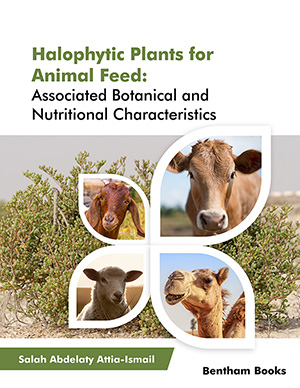Abstract
In climatically unfavorable regions, the animals often consume the only
available feed resource, i.e., halophytic plants. It was noticed that whenever halophytes
are solely fed to animals, they need energy supplementation. Halophytic plant species
vary greatly with respect to their chemical composition and nutritive value. Halophytes
are characterized by great salt concentrations and high contents of acid detergent fiber
and neutral detergent fiber. Halophytes are low-quality forages having fewer available
nutrients and thus, requiring larger amounts of supplements to be added. They require
energy supplementation more than any other kind of supplementation. Supplemental
feeds are usually cereal grains. This chapter discusses in-depth and in detail the issue of
halophytic energy when provided as animal feed (i.e., carbohydrates in halophytes, the
effect of salinity on the carbohydrate content of halophytes, the effect of season on the
carbohydrate content of halophytes, and the discrepancy in energy determination).
Keywords: ADF, Carbohydrates, Chemical composition, Energy, Feed quality, Fiber, Halophytes, NDF, Nutritive value, Salinity, Salt, Supplement.






















